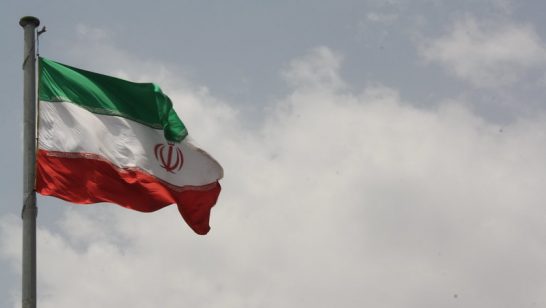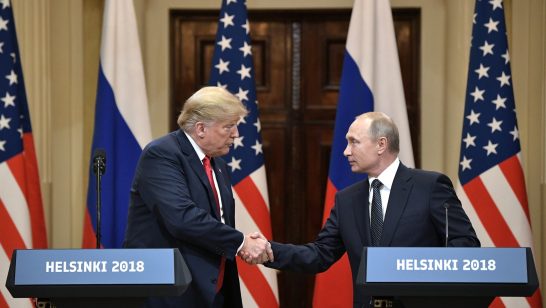
Russia’s recent decision to become more directly involved in Syria by deploying its troops and military equipment into the country has raised concerns about a second area where Russian and Western military forces may inadvertently stumble into conflict. Already there have been concerns about the possibility of an unintentional confrontation in Europe as both Russia and NATO have increased the tempo of their missions and exercises—as detailed in a report prepared by the European Leadership Network and the latest paper from the Task Force on Cooperation in Greater Europe. The Russian involvement in Syria includes forces positioned to enter the conflict on the side of the Bashar al-Assad regime. This creates the possibility of Western airstrikes, which are meant to support factions battling both the Islamic State of Iraq and Syria (ISIS) and Assad’s forces, potentially hitting Russian personnel. Also, Russian actions in support of the Assad regime might also end up targeting not only Western-backed opposition forces, but also Western military personnel or equipment.
This fear has galvanized a whole series of renewed contacts with the Kremlin representing a volte-face by the Obama administration which, because of Russian interference in Ukraine, had suspended most of the high-level dialogues between the US and Russia. The US had also encouraged other Western governments to do the same. The renewal of contact between Defence Secretary Ashton Carter and Defence Minister Sergei Shoigu, the visit of Israeli prime minister Binyamin Netanyahu to Moscow and the last minute meeting on the side-lines of the United Nations General Assembly meeting between Presidents Barack Obama and Vladimir Putin, among others, are designed to ensure that there is appropriate de-confliction of military actions taken by any of the parties. Indeed, at the close of the Obama-Putin meeting on Monday, both presidents agreed that their militaries must coordinate for precisely that purpose.
Putin has used the news of the Russian deployment in Syria to reiterate his calls for forging a grand alliance to combat ISIS that would marry the US-led coalition with the efforts undertaken by Iran and Russia. In an effort to build support among European countries, the Kremlin argues that a swift end to the conflict in Syria is the best way to end the migration crisis. By this logic, this would help to re-establish stable conditions in Syria and allow the refugees to return to their homes. Given the threat that ISIS poses both to Russia as well as to the West, some have argued in favour of revitalizing the post-9/11 grand coalition against terrorism. In reality however, it may prove far easier to develop a series of tactical arrangements designed to prevent unwanted clashes than to find a solid basis for sustained strategic cooperation to end the Syrian civil war and stabilize the region.
This is because the preferred end states of both sides are wildly out of sync, as the Obama and Putin remarks to the general assembly made crystal clear. All parties want to see the Islamic State eliminated but the starting point for the United States and other Western nations is for Bashar al-Assad to give up control and his regime to be dismantled. For Russia, it is all about preserving Assad’s hold on power and his ability to chart the future direction of Syria. The West blames Assad for creating the conditions that have led to the rise of ISIS and unleashed the migration crisis which threatens to swamp the European Union. The Kremlin, in turn, argues that the West continues to let the Syrian opposition believe that it will intervene on its behalf, thus making all efforts to negotiate a settlement fail. It is true that in recent days, we have witnessed slight compromises from both sides. For example, US Secretary of State John Kerry and British Prime Minister David Cameron acknowledged that Assad’s departure need not be instantaneous; and Russian Foreign Minister Sergei Lavrov reiterated that a coalition government between Assad and the “healthy” Syrian opposition is possible. However, these small concessions are not nearly enough to bridge the divide.
Beyond that matter, the Syria crisis is also existentially linked to the turmoil in Ukraine. In both cases, the Russian interventions have been designed to signal to the West that Russia possesses a veto over Western policy preferences (and will exercise it if necessary) to defend what the Kremlin perceives to be its vital interests. In both cases, Moscow has made it clear that it will not allow the West to set the agenda either in the Eurasian space or in the Middle East. Russia would prefer to apply the concert of powers model for resolving problems like Syria or Ukraine where the resulting settlement is the result of a compromise between the great powers and where spheres of influence are respected. This runs up against the US rejection of any such zones of privileged interest and a particular unwillingness to concede to Russia (and to Iran) influence to shape the future parameters of the Middle East. This is also reflected in off-the-record comments by US officials that Russia should consider joining the US-led coalition opposing ISIS, rather than expecting the United States to form an alliance with a separate Russian-led effort.
What could change this calculus? On the Russian side, the potential costs of a Syria deployment where the effort required to prop up the Assad regime drains resources that Russia can ill-afford to spare. At some point, the cost-benefit analysis may lead the Kremlin to reverse course and show a greater willingness to accept the US position. On the US and NATO side, the continued disappearance of anything resembling a “moderate” opposition capable of both overthrowing Assad and containing Islamic extremism, coupled with evidence of ISIS’s ability to strike in Europe or the United States, may shift the calculus towards the Russian view that Assad is the lesser of evils.
As it currently stands, however, Russia and the West are likely to pursue separate courses of action to combat the Islamic State and to try to resolve the Syrian war.
The opinions articulated above represent the views of the author(s), and do not necessarily reflect the position of the European Leadership Network or any of its members. The ELN’s aim is to encourage debates that will help develop Europe’s capacity to address the pressing foreign, defence, and security challenges of our time.



